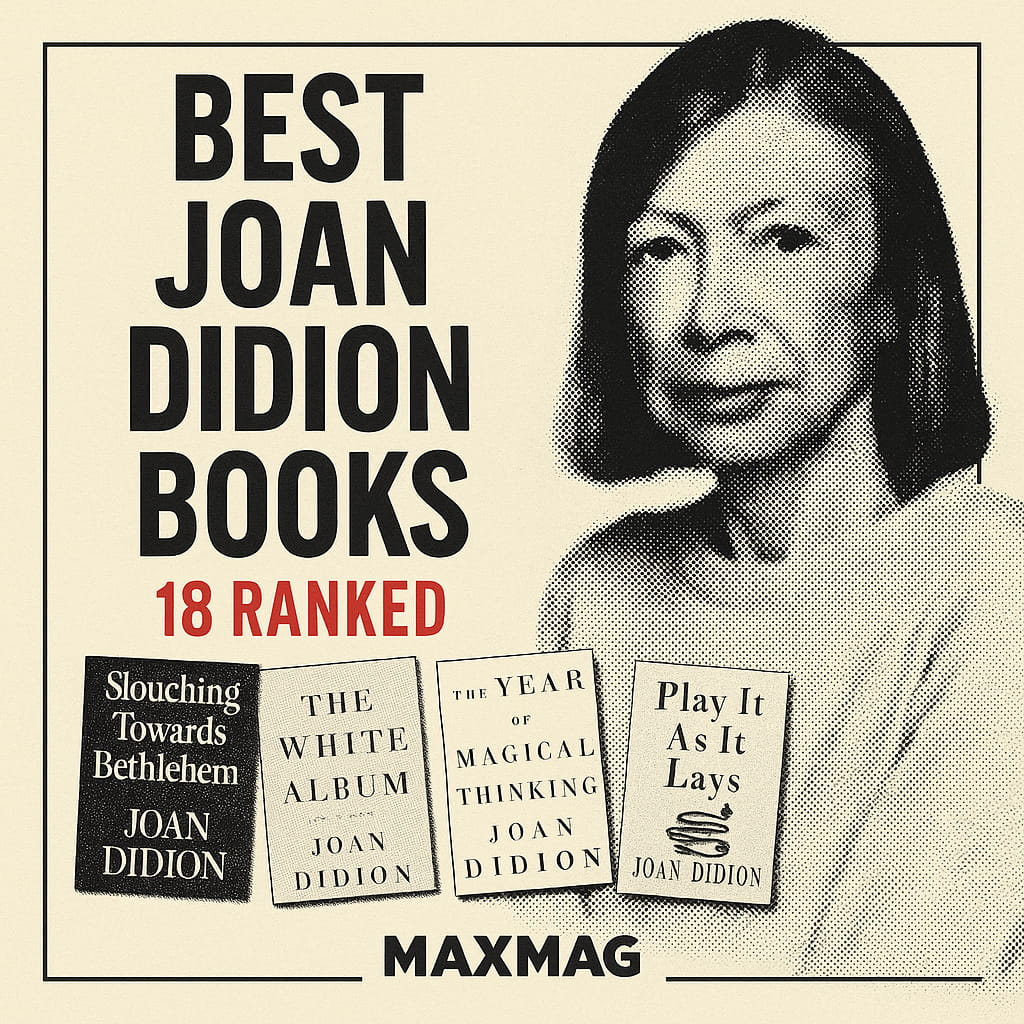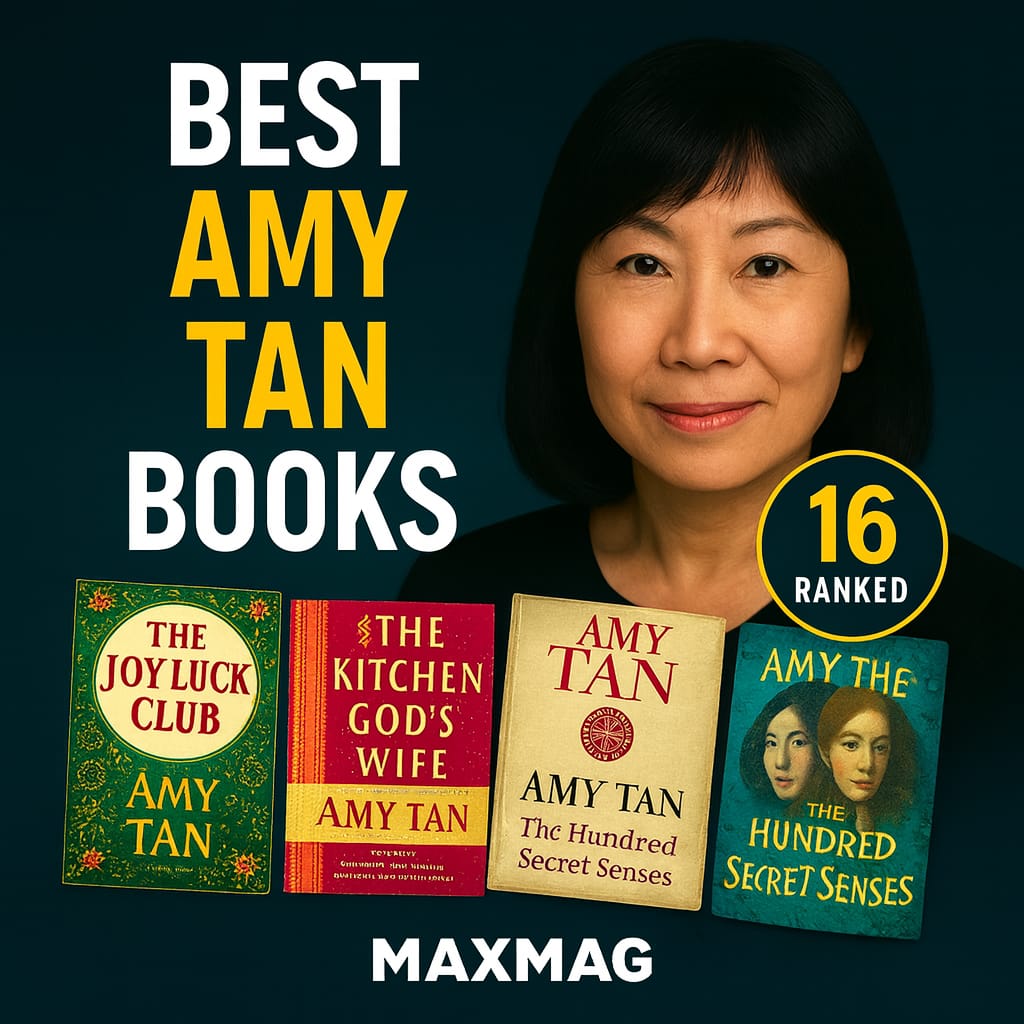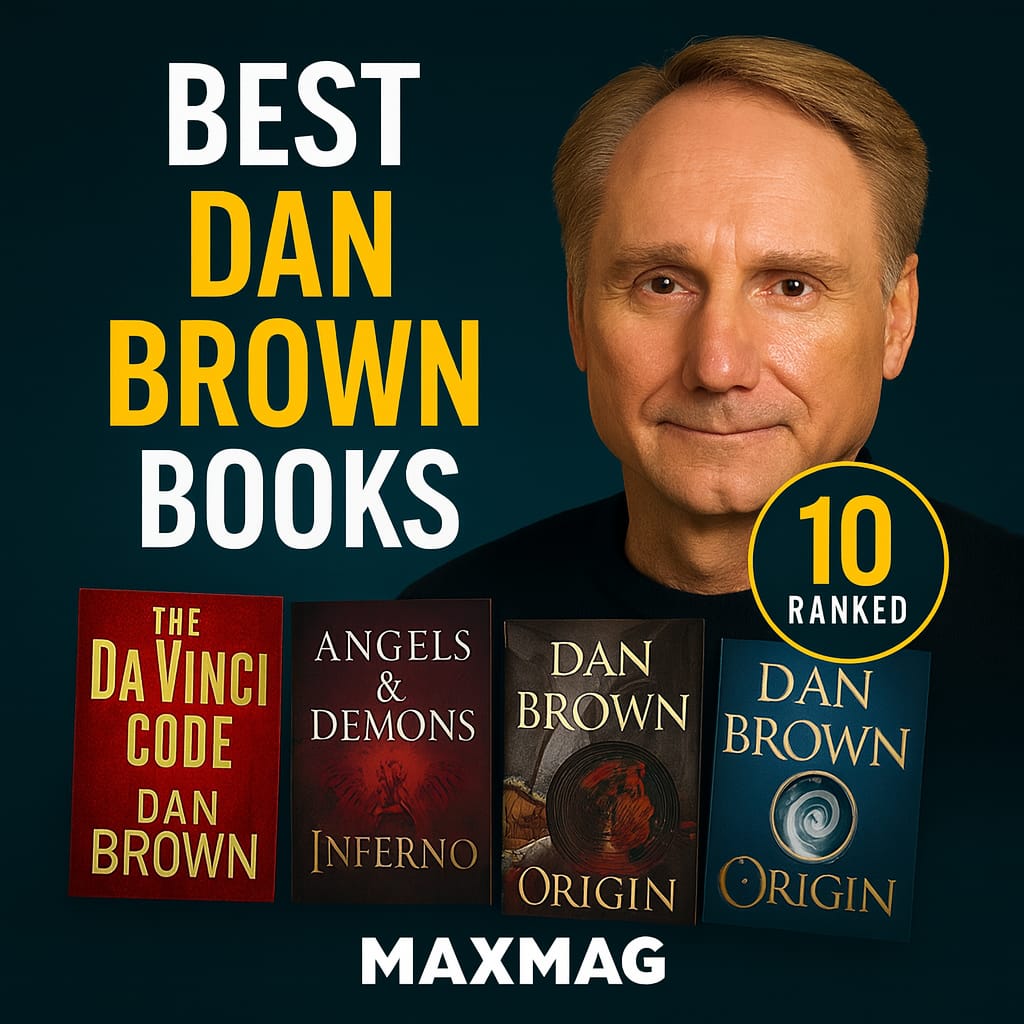
Joan Didion’s life and work, the Best Joan Didion Books lens, trace five decades of American scenes and crises. Born in Sacramento, California, Joan Didion (1934–2021) wrote across novels, essays, and book‑length nonfiction. She is commonly linked to New Journalism and immersion reportage. She is widely known for Slouching Towards Bethlehem and The Year of Magical Thinking. Her career spans from a 1963 debut novel to late‑period collections in 2021. This guide treats fiction and nonfiction in one place. It foregrounds volumes with broad circulation and classroom presence. For a compact reference biography, see Britannica’s overview.
Her breakout came with Slouching Towards Bethlehem, while her best‑selling title is The Year of Magical Thinking. Motifs recur: California mythologies, media narratives, political spectacle, grief, and memory. Readers still care because these stories track private lives against public storms. This ranked guide includes 18 titles drawn from broad readership. It is “a ratings‑led climb from deep cuts to consensus classics,” with a ≥3.0/5 eligibility threshold. Counts reflect active editions and omnibus volumes. We present entities and years consistently to aid comparison. This sequencing situates the oeuvre within a clear historical arc.
18 Best Joan Didion Books in a Rising Rating Order
Methodology & Updates
Ratings were gathered primarily from Goodreads on October 19, 2025; ties are resolved first by earlier publication year, then by A–Z title. Eligibility requires ≥3.0/5. As reader aggregates shift, positions may change; we will update this Best Joan Didion Books list to reflect new data.
#1) The Last Thing He Wanted – 1996
- Author: Joan Didion
- Published: 1996
- Work Type / Genre Tags: novel, political thriller, Cold War aftershocks
- Themes: covert deals, identity, state power, betrayal
- Goodreads Rating: 3.42/5
Set across Washington, the Caribbean, and Central America in the mid‑1980s, a reporter named Elena McMahon steps into a shadowed logistics world. A missing payment and a diplomatic tangle pull her into an arms pipeline tied to regional insurgencies. She tries to complete a delivery while navigating vanishing backers. Contacts, handlers, and old acquaintances complicate every approach. Paper trails blur as agencies, contractors, and middlemen recast facts. The stakes rise when personal obligations collide with opaque state missions. A final operation nears, and the field narrows to a few dangerous choices. The story closes with the consequences of picking one path through a map of disinformation.
#2) Miami – 1987
- Author: Joan Didion
- Published: 1987
- Work Type / Genre Tags: reportage, political nonfiction
- Themes: exile, diaspora politics, intelligence networks, money
- Goodreads Rating: 3.67/5
Set in Miami from the late Cold War into the 1980s, the book follows Cuban exile communities and U.S. operatives whose routes cross in a volatile city. The central conflict lies in clashing agendas among activists, funders, and agencies. The narrator seeks to map how rallies, talk radio, and rumor shape public events. Community leaders, informants, and émigré families drive the narrative’s pressure points. Midway, committee hearings and airport corridors hint at quiet approvals and denials. The stakes climb when policy narratives harden and violence flickers at the margins. A final series of meetings gathers key players toward a decision point. The book ends with a city whose factions move forward under a bright sky and a crowded docket.
#3) South and West: From a Notebook – 2017
- Author: Joan Didion
- Published: 2017
- Work Type / Genre Tags: notebooks, travel notes, cultural observation
- Themes: region, class, memory, landscape
- Goodreads Rating: 3.69/5
Set on roadways through the Deep South and in recollections of California, the notes introduce a traveling observer and the people she meets. The inciting current is a drive to record voices and surfaces before they vanish. The narrator’s aim is to map how speech, heat, and family histories define place. Gas stations, diners, and front porches supply the pressure points as small scenes echo larger patterns. Midway, a second thread returns to Sacramento origins and schoolyard geographies. The stakes rise as casual remarks sketch political moods and private creeds. A closing loop hints at later essays and an unfinished cartography of region. The endpoint is a ledger of scenes that prefigure later investigations.
#4) Salvador – 1983
- Author: Joan Didion
- Published: 1983
- Work Type / Genre Tags: reportage, war nonfiction
- Themes: terror, propaganda, diplomacy, survival
- Goodreads Rating: 3.74/5
Set in El Salvador in 1982, the book follows a brief reporting trip through checkpoints, ministries, and hotel lobbies. The central conflict is a civil war framed by official briefings and street warnings. The narrator’s immediate goal is to test statements against what the city shows by day and night. Drivers, fixers, diplomats, and soldiers provide the tense connections that move events. Midway, morgues and press conferences reshape assumptions about cause and response. The stakes rise as curfews, lists, and whispers narrow movement. A closing pass through the airport suggests outcomes that policy papers will not predict. The book ends with a record of what the country demanded of those passing through it.
#5) A Book of Common Prayer – 1977
- Author: Joan Didion
- Published: 1977
- Work Type / Genre Tags: novel, literary, Central America
- Themes: loss, politics, exile, marriage
- Goodreads Rating: 3.80/5
Set in the fictional Boca Grande, an American woman named Charlotte Douglas arrives with a personal history in pieces. The conflict centers on her search for a missing daughter amid coups, salons, and expatriate rumors. Her aim is to find facts and an explanation that will hold. Figures around her—narrator Grace Strasser‑Mendana, officials, and acquaintances—shape what evidence can be trusted. Midway, dossiers and conversations recast Charlotte’s past decisions. As risks mount, borders and allegiances shift in small, unsteady steps. The arc heads toward a reckoning tied to documents and a final interview. The ending fixes on what can be said and what must remain a gap.
#6) Run River – 1963
- Author: Joan Didion
- Published: 1963
- Work Type / Genre Tags: novel, California family drama
- Themes: inheritance, betrayal, region, decline
- Goodreads Rating: 3.82/5
Set in California’s Sacramento Valley after World War II, Lily Knight and Everett McClellan inherit land and a name. The conflict turns on a marriage strained by affairs and the pressure of old expectations. Lily wants a map out of repetition; Everett wants to hold a fragile order together. Family, neighbors, and a third figure tighten the social net. Midway, a violent act reframes the couple’s story. The stakes rise as the community watches and whispers fix meanings. The trajectory points toward a last attempt to restore terms once taken for granted. The ending leaves a landscape altered by choices rooted in the past.
#7) After Henry – 1992
- Author: Joan Didion
- Published: 1992
- Work Type / Genre Tags: essays, media and politics
- Themes: narrative, image‑making, cities, justice
- Goodreads Rating: 3.83/5
Set across New York, Los Angeles, and Washington, the book threads public stories with private corridors. The conflict emerges from how television, tabloids, and courtrooms shape consensus. The author seeks to follow the route from incident to narrative. Producers, editors, lawyers, and families mark the nodes where accounts harden. Midway, case studies and city tours complicate first takes. Stakes rise when reputations, ratings, and elections hinge on framing. The arc points to one more media cycle that will set the terms for the next. The book closes with files and footage that keep circulating long after headlines fade.
#8) Let Me Tell You What I Mean – 2021
- Author: Joan Didion
- Published: 2021
- Work Type / Genre Tags: essays, previously uncollected pieces
- Themes: ambition, self‑invention, California, observation
- Goodreads Rating: 3.84/5
Set in newsrooms, classrooms, and California rooms, the collection introduces a younger writer testing assignments. The inciting thread is a series of profiles and reflections written between 1968 and 2000. The author’s aim is to show how subjects and sentences teach new angles. Editors, photographers, and public figures press the tempo of each piece. Midway, assignments on campus life and celebrity shift tone and stakes. The pressure rises as deadlines and doubt compete in the margins. A closing essay points toward later books that refine the method. The endpoint is a set of early coordinates for a long career.
Early Currents in the Best Joan Didion Books

#9) Democracy – 1984
- Author: Joan Didion
- Published: 1984
- Work Type / Genre Tags: novel, political fiction, Pacific
- Themes: memory, power, love, secrecy
- Goodreads Rating: 3.85/5
Set between Honolulu, Southeast Asia, and Washington during late‑Vietnam years, the story follows Inez Victor and a CIA officer, Jack Lovett. The central conflict is a long attachment complicated by marriage, class, and events offstage. Inez wants to define a life apart from family script and public glare. Politicians, donors, and handlers set barriers and open doors. Midway, flights and files reorder what the pair can admit. Stakes rise with coups, scandals, and the pressure of naming truth. The arc points toward a choice between public roles and private ghosts. The ending rests on what remains unsaid after departures.
#10) Political Fictions – 2001
- Author: Joan Didion
- Published: 2001
- Work Type / Genre Tags: essays, U.S. politics
- Themes: campaigns, media, language, power
- Goodreads Rating: 3.86/5
Set on campaign trails and in press rooms from the late 1980s to 2000, the essays chart how insiders script national stories. The conflict centers on narrative management versus observable events. The writer aims to track euphemism, pollsters, and photo‑ops to their sources. Candidates, consultants, and correspondents drive the exchanges that matter. Midway, a primary season reveals how talking points become premises. Stakes rise as donors and news cycles fuse into one machine. The trajectory points toward a general election defined by theater. The book ends with documents that outlast the candidates who produced them.
Momentum Builds Across Best Joan Didion Books
#11) Where I Was From – 2003
- Author: Joan Didion
- Published: 2003
- Work Type / Genre Tags: memoir/history, California
- Themes: myth, settlement, subsidy, identity
- Goodreads Rating: 3.86/5
Set in archives and on highways, the book examines California stories told by families, boosters, and statesmen. The conflict is between the self‑image of rugged independence and a record of public support. The author seeks to reconcile personal lineage with policy history. Ranchers, officials, and writers become figures in a long argument. Midway, letters and ledgers force a revision of cherished claims. Stakes rise as droughts, deals, and disasters shift the record. The arc heads toward a new description that can hold both pride and ledger lines. The close leaves a map of home that includes its omissions.
#12) Fixed Ideas: America Since 9.11 – 2003
- Author: Joan Didion
- Published: 2003
- Work Type / Genre Tags: essay, political analysis
- Themes: security, rhetoric, exceptionalism, consensus
- Goodreads Rating: 3.90/5
Set in the immediate post‑September 11 period, the work follows how a single storyline reshaped debate. The conflict is between urgent policy claims and contested facts. The writer aims to note words that moved quickly into laws and budgets. Officials, columnists, and networks form the chorus that narrows terms. Midway, speeches and op‑eds codify a new vocabulary. The stakes rise as dissent is framed as error and caution as delay. The arc turns toward the point where narratives harden into doctrine. The ending leaves a small dossier of phrases that defined an era.
#13) Play It As It Lays – 1970
- Author: Joan Didion
- Published: 1970
- Work Type / Genre Tags: novel, Hollywood, psychological
- Themes: control, despair, image, freedom
- Goodreads Rating: 3.91/5
Set in Los Angeles, Nevada, and on desert roads, actor Maria Wyeth drifts through studios and freeways. The conflict is a life pared to routines as agents and friends script her days. Maria wants a way to steer without a map. Directors, lovers, and a former husband shape the pressures she cannot shake. Midway, hospital rooms and parties recast what recovery could mean. The stakes climb as a past decision returns with weight. The arc points toward an action that seems both refusal and acceptance. The final image fixes on a sentence she can live with.
#14) The Year of Magical Thinking – 2005
- Author: Joan Didion
- Published: 2005
- Work Type / Genre Tags: memoir, grief
- Themes: mourning, marriage, time, memory
- Goodreads Rating: 3.93/5
Set in New York and Los Angeles in 2003–2004, the narrator tracks the year after her husband’s sudden death while her daughter is gravely ill. The conflict is between rational routines and a mind’s refusal to accept finality. The immediate aim is to keep records, appointments, and meaning intact. Doctors, friends, and colleagues become witnesses to days that tilt. Midway, notes and hospital charts rearrange the narrative’s center. The stakes rise as a season of hope gives way to another kind of waiting. The arc moves toward a new calendar that recognizes what changed in an instant. The book ends with a line that names how fast life turns.
#15) Blue Nights – 2011
- Author: Joan Didion
- Published: 2011
- Work Type / Genre Tags: memoir, elegy
- Themes: daughter, illness, age, memory
- Goodreads Rating: 3.94/5
Set across apartments, hospitals, and remembered rooms, the book follows reflections after a daughter’s death. The conflict lies in what memory preserves and what it cannot retrieve. The narrator wants to hold a life in sentences that will not blur. Friends, photographs, and small objects carry pressure as time passes. Midway, the ledger of risks and luck shifts tone. The stakes rise as aging reframes every ordinary task. The arc points toward a recognition of what remains and what will fade. The final note accepts a night that lasts longer than it once did.
#16) The White Album – 1979
- Author: Joan Didion
- Published: 1979
- Work Type / Genre Tags: essays, California and the 1960s
- Themes: fragmentation, celebrity, violence, narrative
- Goodreads Rating: 4.03/5
Set in California during and after the 1960s, the essays move through recording studios, courtrooms, and houses in the hills. The conflict is between public stories of a decade and what rooms and streets actually show. The writer aims to connect small details to an era’s larger drift. Musicians, activists, and neighbors provide the tensions that accumulate. Midway, cases and interviews refocus the frame on consequence. Stakes rise as the dream of a scene gives way to aftermath. The arc heads toward an essay that becomes the collection’s spine. The book ends with images that reappear in later debates.
Toward the Peak of Best Joan Didion Books
#17) Slouching Towards Bethlehem – 1968
- Author: Joan Didion
- Published: 1968
- Work Type / Genre Tags: essays, New Journalism
- Themes: counterculture, California, self‑respect, place
- Goodreads Rating: 4.18/5
Set in San Francisco and elsewhere in California in the late 1960s, the essays track neighborhoods, scenes, and family histories. The conflict is between private realities and public myths of liberation. The author’s aim is to render moments before they are cleaned up for memory. Teenagers, runaways, and figures in the press become central to the narrative’s turns. Midway, an essay on the discipline of self‑respect reframes several earlier portraits. Stakes rise as small choices echo across years. The arc points toward a closing sequence that gathers earlier threads. The final pages leave a record of how a place looked when the center would not hold.
#18) We Tell Ourselves Stories in Order to Live: Collected Nonfiction – 2006
- Author: Joan Didion
- Published: 2006
- Work Type / Genre Tags: collected nonfiction, omnibus
- Themes: myth, media, California, politics, loss
- Goodreads Rating: 4.43/5
Set across multiple earlier books, the volume brings together essays and reportage spanning decades. The conflict is how a nation and its storytellers fix meaning. The compiler’s aim is to place related investigations side by side for a broader arc. Editors, subjects, and public records form the connective tissue. Midway, California chronicles and political dispatches cast light on one another. The stakes rise as personal and national griefs enter the record. The trajectory points toward a canon that can be read as one story about stories. The volume ends with the sense that the files remain open.
Joan Didion: Life & Legacy
Joan Didion (1934–2021) grew up in Sacramento, studied at UC Berkeley, and worked at Vogue before publishing novels, landmark essay collections, political reportage, and memoirs; signature works include Slouching Towards Bethlehem, The White Album, Miami, Where I Was From, The Year of Magical Thinking, and Blue Nights. Her innovations placed granular observation beside structural critique and helped frame New Journalism’s reach into politics and private life; honors include the 2005 National Book Award and later Library of America editions that position her among major American authors. In classrooms, newsrooms, and archives, her influence endures for its blend of scrutiny and restraint, a model many later writers adapt when covering culture and power; this placement within the Best Joan Didion Books conversation reflects breadth across genres.
Conclusion
Eighteen titles appear here, stretching from a 1963 debut to late‑career notebooks and a 2006 omnibus; the ascending order from modest aggregates to widely loved mainstays shows early California novels, a middle period of political and media inquiry, and recognized high points in memoir and collected essays. For context on the award that propelled one major volume, see the National Book Foundation page for The Year of Magical Thinking (official entry). At a glance, the Best Joan Didion Books chart a steady consolidation of subjects and stakes.
Across the set, recurring subjects include family legacies, regional mythmaking, the engineering of news, and grief’s narratives; the sequence also shows range—from intimate domestic scenes to hemispheric politics—without leaving her attention to detail. For a journalistic perspective on how the memoirs reframed grief for readers, see Time magazine’s reflection. Taken together, the Best Joan Didion Books offer readers an organized path through eras, places, and forms.
FAQ: What to know about the Best Joan Didion Books
Q1: Where should a newcomer start with the Best Joan Didion Books?
Q2: Are the novels essential within the Best Joan Didion Books?
Q3: How did California shape the Best Joan Didion Books list?
Q4: Why rank by ratings instead of influence?
Q5: What themes recur most often?






